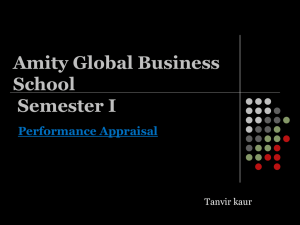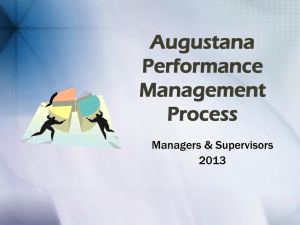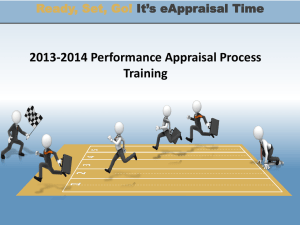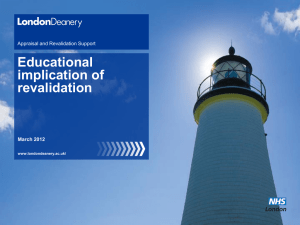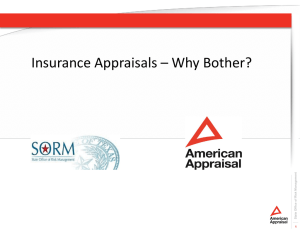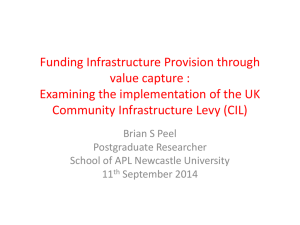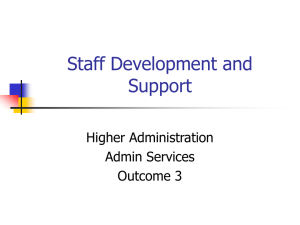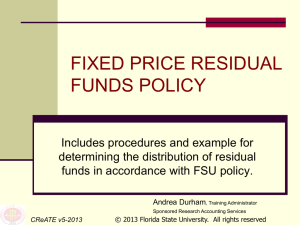eres2012_024.content
advertisement
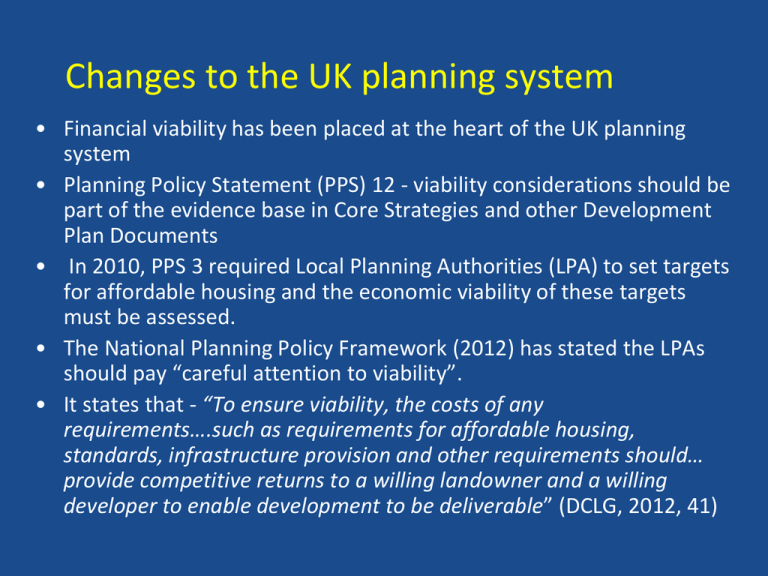
Changes to the UK planning system • Financial viability has been placed at the heart of the UK planning system • Planning Policy Statement (PPS) 12 - viability considerations should be part of the evidence base in Core Strategies and other Development Plan Documents • In 2010, PPS 3 required Local Planning Authorities (LPA) to set targets for affordable housing and the economic viability of these targets must be assessed. • The National Planning Policy Framework (2012) has stated the LPAs should pay “careful attention to viability”. • It states that - “To ensure viability, the costs of any requirements….such as requirements for affordable housing, standards, infrastructure provision and other requirements should… provide competitive returns to a willing landowner and a willing developer to enable development to be deliverable” (DCLG, 2012, 41) Development viability research agenda • Government and planning authorities interested in development viability assessment for the first time. • Need for advice on viability assessment for individual sites and LPA affordable housing and other policy formation. • Development appraisal methods have come under scrutiny. • Has also become part of planning and real estate research agenda (ESRC/RICS guidance note) Investment and Development Appraisal • Overall hypothesis is that DA is part of a wider set of appraisal method – another form of investment so the assumption would be that it “fits” with other wider investment principles. • Should mimic appraisal methods within finance and within investment property appraisal Research question • To critically evaluate both the theory and practice of development appraisal. • Drawing on publicly available documents, we identify the application of technique to development appraisal in UK practice. • We place this analysis of practice in the context of mainstream capital budgeting theory and discuss any variation between theory and practice. Literature review • Texts addressing UK development appraisal indicate two models – Basic residual model – Cash flow • Basic residual model is well documented as [1] Where LV0 = residual land value at time t = 0 i= cost of finance (annual interest rate) t= development period DV0= current estimate of development value p = profit as a percentage of DV (or can be based on DC) DC0 = current estimate of development costs I= finance costs (usually calculated over the construction phase of the development period only) The cash flow model • Basic model is (Brealey, et al, 2008; Lumby and Jones, 2003; Ryan, 2007). 1 LV0 R0 n R DV (1 d ) (1 d ) n [2] Where: R = recurring periodic net revenue received or expenditure incurred at the end of each period, n d = discount rate/which includes a profit expressed as a rate of return on capital n = number of periods over development period and other variables are as defined previously We are going to concentrate on Profit/Return; Finance; and Growth/Change in Values and Costs The application of the development cash flow model in UK texts • Baum, Mackmin and Nunnington,2002; Cadman and Topping, 1995; Havard, 2002; Isaac, 1996; Millington, 2004; Morley, 2002 in Guy and Henneberry (eds); and Ratcliffe, Stubbs and Shepherd, 2001). Suggest that the cash flow mimics the assumptions within a simple residual. – Profit put in as a lump sum even though cash flow discounted at the target rate of return includes “profit” – Target rate identified as the borrowing rate, even though completely different risk profiles for bank and developer – Finance assumed on 100% of outlay including land value – hypothetical infinite yields on equity – Some include value and cost change, some do not, little amendment to target rates/interest rates to real or nominal rates. Critiques of method • However, a number of the texts do critique some of these assumptions. • Brown and Matysiak (2000, 144) summarise the problems of the simple residual approach by suggesting that “although it does include some rudimentary cash flow analysis, it breaks a number of rules”. • Most of Brown and Matysiak’s (2000) criticisms of the simple residual technique still hold for the UK textbook cash flow approaches to development appraisal. • US texts are better - Fisher and Martin (1991) include profit as a required sum but suggest the application of a discount rate that is a required rate of return rather than a cost of finance. Peiser and Frej (2003) use part debt financing rather than 100% financing. • But surely practice is better equipped to apply models properly and the texts are outdated? Applications in practice • Last survey of UK practice done by Marshall and Kennedy (1993) based on survey in 1989 – Identified the use of both residual and cash flow models but concentrated on lists of inputs rather than how they were applied within the models. • 2 proprietary models for undertaking development viability assessments – The GLA Affordable Housing and S106 Toolkit, developed by Three Dragons – residual and has a cash flow addition – but uses a lump sum profit and 100% financing assumptions – The Homes and Communities Agency’s (HCA) Economic Appraisal Tool (EAT) – The latest version allows an IRR to be calculated assuming no funding and no other profit input. But will it be used? Analysis of DVA in practice • 19 DVAs produced for different LPAs analysed for approach to development appraisal. • Based on values in the years 2007 to 2011 with seven based on 2010 values, four on 2008, three on 2009 and two each on 2007 and 2011 values. • Specialist providers produced six of the viability assessments and a further six were produced by real estate consultancies such as CBRE and DTZ. Another three were produced by Public Sector bodies including the Valuation Office Agency, the City of London and a University. Planning and Engineering consultancies produced two each. • The locations of the assessments were seven London districts including the City of London and Westminster, two city councils, four larger towns and six smaller districts. Results – which model used? • 15 were based on residual models although they did use cash-flows to calculate finance costs. • However, one was a simple residual with no finance cashflow. • Two of the assessments were cash-flow based; one was purely cash-flow based and the other used a cash-flow for the larger scheme in its appraisal. • The cash-flow based assessment was carried out for Westminster by one of the larger real estate consultancies using their own bespoke model. Results – Proprietary or bespoke? • Bespoke models were used to produce 13 of the viability assessments, • 4 used specialist toolkits such as Three Dragons or the HCA Economic Appraisal tool and in one case it was unclear. • The remaining one used proprietary software (Argus Developer). Results - application • 16 found the residual site value (RSV), one the IRR and the RSV, one derived profit and another it was unclear! • Forecasting – 10 did not forecast costs and values and what was done was unclear in 6 others, 1 did forecast both costs and revenues within a cash flow and 2 did so within the residual model. • Profit identified as simple return on development value in 12 cases and return on cost in 5 cases. One case not specified and one IRR only. Returns on development value averaged 20% and 4 out of five returns on cost were between 15% and 20%. IRR was 15%. Results - application • Finance rates ranged from 6% to 9.3% with an average of 7.2%. • In three cases credits were accumulated at different rates to debits and these rates were two at 3.5% and one at 6%. • The use of finance rates to either accumulate or discount costs and values within the model was universal as was 100% debt financing and this was also the case even when the objective was to find the IRR (the cash flow net outflows were subjected to an interest charge of 6.5%). Conclusions • Real estate investment appraisal has been firmly rooted in mainstream capital budgeting theory for many years in both the US and the UK. • In the UK, the application of technique to development does not appear to have had the same scrutiny or profile, leading to little academic or professional interest and critical commentary. • Basic texts consistently promote both a simple residual and a cash flow approach to development appraisal • But the inputs and the analysis within the cash flow model tends to mimic the application of the simple residual. • This leads to the use of 100% financing, current costs and values with no distinction between real and nominal interest rates, the use of rule of thumb capital profit figures coupled with discount rates based on borrowing rates. • The DVA assessments illustrate that the texts are a true reflection of practice. • So it is time development appraisal in the UK was dragged into mainstream finance theory and practice; the models are the same but the application needs a complete overhaul.
